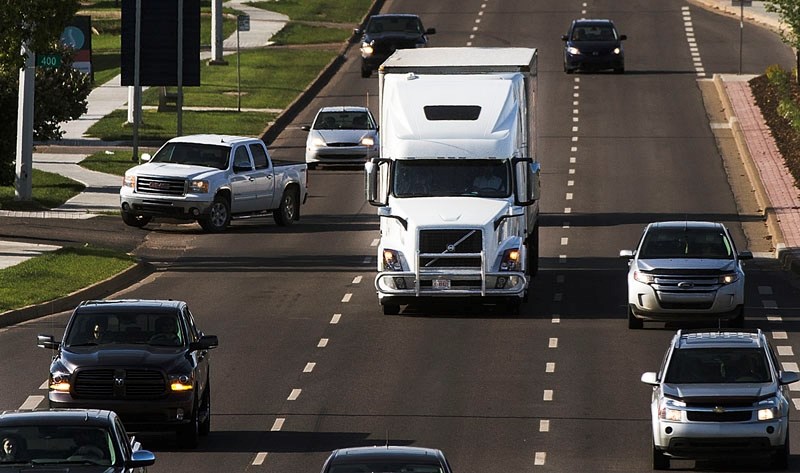As summer approaches and more large trucks and recreational vehicles get out on area roads, enforcement officials are focusing on commercial vehicle safety.
Chris Frehlich, general manager at Libra Transport in St. Albert who has two decades of experience in the trucking industry, has seen first-hand some incredibly dangerous behaviour – and not necessarily from the truck drivers themselves. It’s often other drivers who don’t realize how close they might have come to serious injury or death.
He recalls one incident in the 1990s, driving a Super Bee fully loaded with roofing equipment in Edmonton. He was approaching a stale green light, knowing it was going to soon turn, and was preparing to slow down and stop.
“A lady in a little Honda made a lane change directly in front of me, 15 feet in front of my hood,” he said.
The light changed to yellow, the driver stopped her vehicle suddenly, and Frehlich’s knuckles went white.
“I got the vehicle stopped less than two feet behind this lady’s bumper,” he said. “I narrowly avoided killing that lady.”
And putting in the long hours behind the wheel, he has seen plenty of other behaviour that just makes him shake his head, as have the people he’s worked with.
One of the big ones is passing unsafely, especially on mountain roads. Drivers know all the twists and turns, know when they have to slow down to take a sharp corner and sometimes end up with a lineup of passenger vehicles behind them. Some drivers, unfortunately, are in a hurry to get where they’re going and try to pass even when it’s clearly unsafe.
What’s worse is often two drivers will try to pass at the same time.
“Now you’ve got two vehicles beside you, and vehicles oncoming in their lane. No exaggeration, we see that daily,” he said. “Not a single trip goes by for any of our operators that they don’t see something extremely dangerous.”
Drivers often tend to ride a truck’s blind spot, as well, which is a very large area covering nearly the length of the truck and trailer, as well as right in front of and right behind the vehicle.
He conceded, however, that while many in the trucking industry take safety seriously, they’re not perfect either.
Cpl. Timothy Gaultois, head of the St. Albert Traffic Services Unit, said he would like to have more resources to dedicate to commercial vehicle enforcement. But even without that specialized knowledge, officers see commercial vehicle infractions daily.
For the most part, it has to do with the maintenance on the truck – everything from tire size and mud flaps, to log books filled out improperly or not at all.
“There are some very strict regulations on commercial vehicles,” he said. “Unless the vehicle is brand-new or coming directly off the service lot, there is something on every vehicle we stop.”
Another issue he sees often, and notes it’s a personal pet peeve, is trailers with bobcats and excavators that haven’t been cleaned properly, and as a result shed rocks and debris on the highway.
“You wonder why everyone in Alberta has a broken windshield, and it’s because these guys are not cleaning them as they should,” Gaultois said. “I don’t like the fact I have to replace my windshield twice a year, so they’re getting a ticket.”




